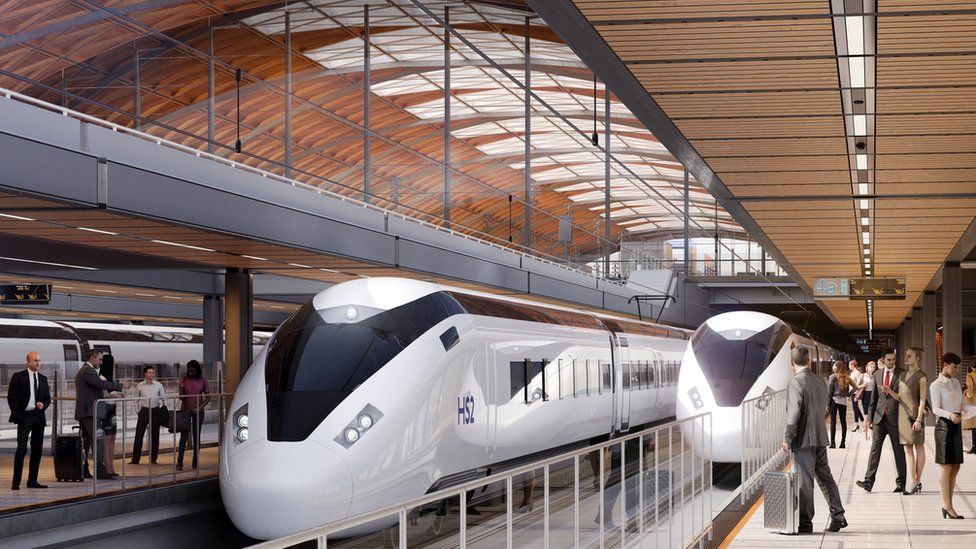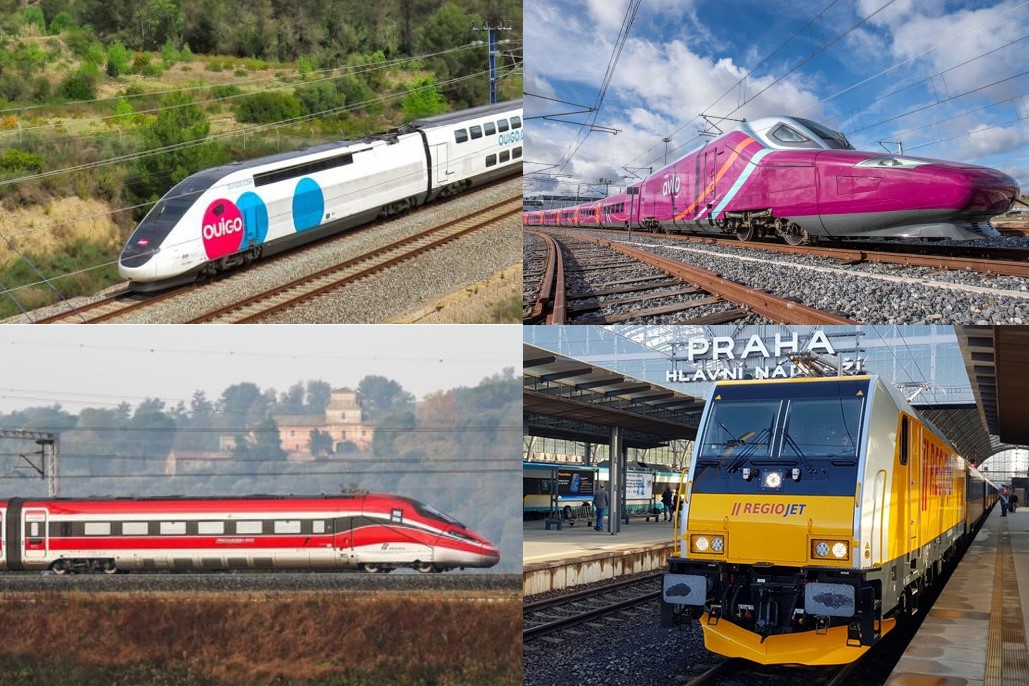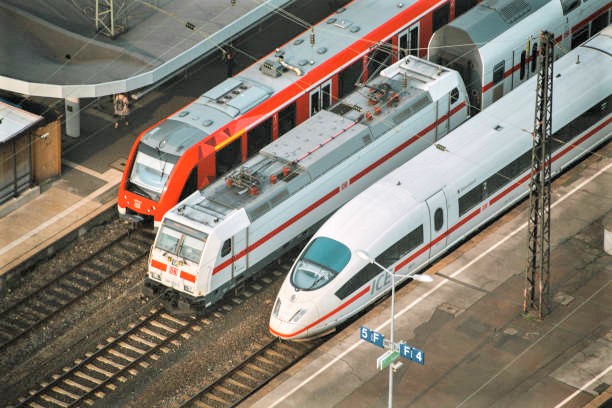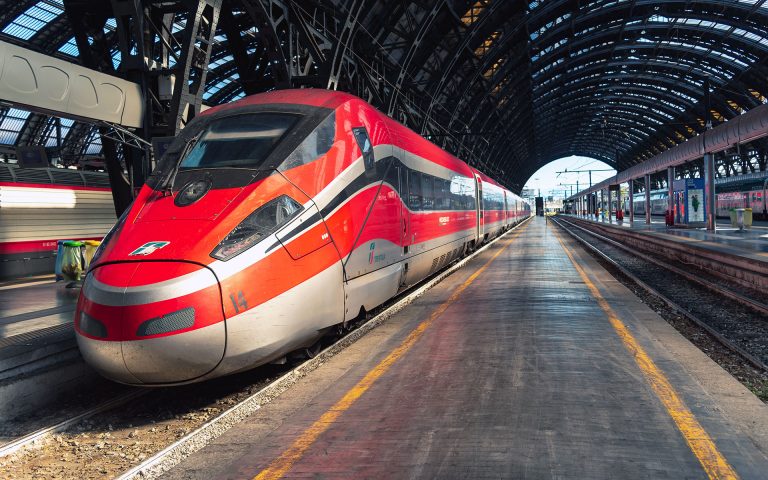27/04/2022 – By Frédéric de Kemmeter – Railway signalling and freelance copywriter – Suscribe my blog
(Version en français)
🟧 Back to homepage 🟧 See our brief news
This Thursday 28 April marks the 10th anniversary of the start of NTV-Italo’s services in Italy. This is an opportunity to look back on this undeniable success, which was unique in Europe, while high-speed competition is now taking off in Spain and France.
Nuovo Trasporto Viaggiatori, better known by its commercial name of NTV-Italo, is a private high-speed rail company that started its services on 28 April 2012. It is the second railway company to be created in Italy, after the aborted attempt in 2010 by Arenaway. It is probably the most successful example to date of a private high-speed rail company in Europe.
It was founded in 2006 by several prominent Italian industrialists: Luca Di Montezemolo (head of Ferrari), Diego Della Valle (CEO of the leather goods company Tod’s), Gianni Punzo (CEO of the logistics company CIS) and Giuseppe Sciarrone, a former employee of Trenitalia and Rail Traction Company. Remarkably, this was the first private high-speed company in Europe, with the aim of competing with Trenitalia’s high-speed lines, which were then undergoing restructuring. Among the shareholders was the SNCF itself, which led to the end of the Artesia cooperation between Trenitalia and the SNCF at the end of 2011 (and the birth of Thello).
What kind of high-speed policy?
The Italian high-speed model has a more pronounced analogy with the German model than the French model. It is about linking a string of cities, fairly close to each other between Milan and Naples as well as on the Turin-Milan-Venice route.
Strong ambitions
From the outset, NTV made an ambitious choice by opting for a massive investment of €1 billion, of which €628 million just for the purchase of 25 new high-speed trains that only existed on a drawing. The new company planned to offer three classes of travel, similar to the airlines. This would shake up a rail model that had historically been based on two classes of travel.
The business model was also intended to be ambitious, in a context that was unfavourable to Italian rail transport. From the outset, NTV’s cost structure was also intended to be similar to that of low-cost airlines, and the strategic plans called for the hiring of 1,000 direct employees (including 100 drivers and 700 on-board staff) to reach a target of 8 million customers by 2014. NTV had also decided to subcontract certain tasks for train maintenance, catering and ticketing.
The plan was to gain 20-25 per cent market share by 2014-2015, to break even by 2014 and to open new routes to Bologna, Padua, Venice and Turin in a second phase.
A difficult start
The arrival of this competition was not without difficulty, as the legislation was not yet truly drafted in favour of competition at that time. There was not yet a real regulator as required by European Commission.
The start of the first train service on 28 April 2012 is taking place through legal grey areas from which the incumbent company Trenitalia took full advantage, particularly with regard to access to essential facilities. NTV-Italo had to operate for a year and a half in an environment where no competent regulatory authority was monitoring the market. With unfortunate consequences. At the inauguration in Rome-Ostiense (not Rome-Termini) station, NTV-Italo showed up in a station where platforms were completely enclosed by a fence.
At the end of 2014, NTV-Italo was not doing well financially and was close to going to court. SNCF withdrew at that time…
A new start
The arrival of the new rail regulator in 2014, the ART (« Autorità di Regolazione dei Trasporti »), was decisive on an institutional level, by the lowering of rail tolls and the establishment of a legal framework for access to the rail network. The new scale of tolls payable by high-speed companies (also available for Trenitalia, the incumbent operator) for 2015 led to a reduction of around 30 per cent from 12.8 euros per train-kilometre to 8.2 euros per train-kilometre. Previously, these tolls were estimated at around 13.4 euros per train-kilometre.
In 2015, an important action concerned NTV’s debts of €681 million, which were rescheduled with the aim of repaying 70 per cent by 2028 and the remaining 30 per cent by 2033. A €100 million recapitalisation gave NTV-Italo some breathing space and it made its first profit in 2016.
The business then went from strength to strength with an extension of the network in Italy and the additional purchase of 22 EVO trains capable of 250km/h, bringing the NTV-Italo fleet to a total of 47 trains.
In terms of traffic, after only six years of operation, NTV-Italo recorded almost 17 million passengers carried in Italy in 2018, almost two and a half times what Thalys had done in 20 years.
New shareholders
In 2018, NTV-Italo was sold for €1.98 billion to the international fund manager Global Infrastructure Partners III and in September 2018, the German insurance company Allianz acquired an 11.5% stake in Italo-NTV from Global Infrastructure Partners III (GIP), making Allianz the company’s second largest shareholder.
In Italy, some people were horrified to see a national nugget being sold abroad. Founder Luca Cordero di Montezemolo’s scathing response: ‘When we were about to close in 2014, to take the accounts to court, no one lifted a finger, except for the bank Intesa SanPaolo. And even now, when the GPI offer came in, I didn’t see anyone proposing alternative hypotheses, to be willing to take more than 40 per cent. The US group is a great sign of optimism about the possibilities [of investment] in our country, a particularly important act of confidence at times like this.‘
After the throes of the pandemic, which virtually shut down the service in 2020, things seem to be getting back on track even if the context is not the same as in 2019.

Milan-Rome non-stop
New features of the 2022 timetable change include new connections to Genoa, direct routes between Udine and Milan, an increase in services to the South and a significant investment in the Milan-Rome route, the company’s main connection for business customers, which can count on 64 services a day.
Of these 64 daily services, one every 20 minutes at peak times, 32 are « NoStop » (without intermediate stops). The Milano Rogoredo station is increasingly important, with 39 services, 19 of which are NoStop. The company has also decided to strengthen the service and comfort, which have always been the distinguishing features of travel with Italo.
Some conclusions
Trenitalia, operating in all segments of the passenger transport market, had significant and positive economies of scale and network from the outset. These would represent a substantial economic advantage with respect to NTV-Italo, which was starting from scratch with a much smaller network.
According to some academic authors, rather than a threat, the arrival of a competitor actually revealed that Trenitalia was able to make major innovations in its services, prices and operational costs to meet the competitive pressure. A situation that NTV-Italo would have underestimated.
In 2015, in the face of Trenitalia’s resilience and NTV-Italo’s financial woes, the private operator’s historical shareholders undertook a major strategic shift, showing their confidence in Italo. This action reflects the importance of having a clear-sighted management and proves that it is possible to turn around a perilous situation without political backing.
Debt has been drastically reduced, by almost 30 per cent between the end of 2017 and the 2012 peak.
In the end, Trenitalia, under pressure to improve its services and reduce operating costs, saw its High Speed traffic continue to grow and its overall financial situation improve. NTV has been a commercial success, with market shares reaching 25 per cent to 30 per cent after only 5-6 years of competition.

The graph above, limited to 2016 and kindly authorised by the author, shows us very clearly four phenomena:
- Subsidised mainline traffic (in grey) is dominant until after the 2000s with the arrival of low cost aviation;
- Non-subsidised high speed (in green), but in monopoly, allows to fight against low cost aviation, without however stopping the decline of the rail share;
- The non-subsidised high-speed share becomes predominant from 2009 onwards, without however managing to halt the decline in traffic following the 2008 crisis;
- In 2012, the arrival of NTV-Italo (in orange) is combined with an increase in high-speed traffic from… Trenitalia!
In the end, it was a win-win operation that can be not really repeated elsewhere in Europe. Because Italy’s uniqueness played a role, particularly in terms of the architecture of the network, which is stretched over 800 kilometres with a major city every 200 to 300 kilometres.
It also remains to be seen what the challenges are for rail transport after two years of the pandemic, when business traffic has not returned to its pre-2020 levels and leisure traffic seems to predominate.

27/04/2022 – By Frédéric de Kemmeter – Railway signalling
Suscribe my blog
Other articles:
 Great-Britain: scaled back plan for HS2 network project
Great-Britain: scaled back plan for HS2 network project
21/11/2021 – The UK’s high-speed network project HS2 is undergoing a major slimming down in the part towards the Midlands. The authorities intend to shift the focus of rail policy to local and regional transport in this region. But with what money?
 Can the train really replace the plane?
Can the train really replace the plane?
28/06/2021 – The train could replace some 500 to 1000km flights. Mentalities seem to be evolving in this direction and the average travel time would increase. But there are still a number of conditions for this replacement. xxxxxxxxxxxxxxxxxxxxxxxxxxxxx xxxxx xxxxxxxxxx xxxxxxxxxx xxxxxxxxxxx
 What’s new about long distance operators?
What’s new about long distance operators?
22/08/2021 – There is a lot of movement among the long-distance operators in Europe. This is an opportunity for a brief summary as we enter the last quarter of 2021, featured Trenitalia, Ouigo Espana, REgioJet and Renfe. xxxxxxxxxxxxxxxxxxxxxxxxxxxxx xxxxx xxxxxxxxxx xxxxxxxxxx xxxxxxxxxxx
 Moving from product to customer: can rail learn from Gafam?
Moving from product to customer: can rail learn from Gafam?
20/06/2021 – Moving from a « product » policy to a « customer » policy is a real challenge for rail. The weight of assets (trains-infrastructure) and cultural habits still largely shape rail policy, but there are, however, some reasons for hope. xxxxxxxxxxxxxxxxxxxxxxxxxxxxx xxxxxxxxxxx
 D-Takt: the great challenge of the clockface timetable 1/2
D-Takt: the great challenge of the clockface timetable 1/2
05/02/2021 – A train every half hour from city to city and from village to village. Convenient transfers without long waiting times, even in the countryside. Riding a train anywhere in the country would be as easy as riding the S-Bahn in the cities today. It is the Deutschlandtakt, the german’s clockface timetable.
 Want to save the environment? Then you should stop traveling !
Want to save the environment? Then you should stop traveling !
02/11/2020 – Why a climate lockdown and the local economy can put the train at risk? If there is no more travel, there are no more trains. If the economy is local, there are no more freight trains


Vous devez être connecté pour poster un commentaire.